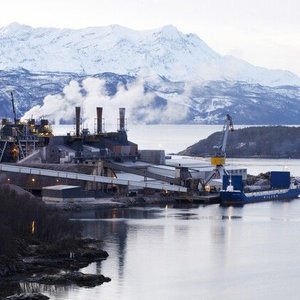The Agricultural Outlook, 2015-2024, predicts positive market prospects for seafood over the next ten years, with Asia continuing to drive major changes and expansion in global fishery and aquaculture production, trade and consumption.
The report, a collaborative effort of the Organisation for Economic Co-operation and Development (OECD) and the Food and Agriculture Organization (FAO) of the United Nations, estimates that apparent per capita fish consumption reached 20 kg in 2014.
Developing countries, particularly in Asia, will continue to drive major changes and expansion in global fishery production, trade and consumption. However, counter to the long-term trend, in 2014 trade increased faster in developed countries than in developing countries, largely due to strong growth in the United States market and a record-breaking year for key producer and exporter Norway.
Fish prices remained above 2013 levels for most species and products, in particular for farmed species. The FAO Fish Price Index (base 2002-04=100) indicates that prices are at record heights, reaching a peak in March 2014 (at 164, with aquaculture species at 168).
Drivers affecting future world fish prices will be income and population growth, limited increase in capture fisheries production, high meat prices in the short term, and feed prices. All these factors will contribute to high fish prices in the near future followed by a decline in the remaining years of this decade and an increase in the 2020s.
The aquaculture to coarse grains price ratio is expected to be cyclical over 2015-24 and to eventually stabilise slightly lower than the historical average (1990-2014). The price ratio between aquaculture and fishmeal will remain relatively stable. Since the feed demand for fishmeal from aquaculture and livestock sectors is growing faster than supply, an increase in the fishmeal to oilseed meal price ratio is expected.
The popularity of Omega-3 fatty acids in human diets and the growth in aquaculture production have both contributed to a rise in the fish oil to oilseed price ratio since 2012, which is expected to be maintained over the medium term. However, since fish oil and oilseed oil prices are starting from very high levels, a decline is expected in nominal terms for the rest of this decade.
Fisheries production worldwide is projected to expand by 19% between the 2012-14 base period and 2024, to reach 191 million MT. The main driver of this increase will be aquaculture, which is expected to reach 96 million MT by 2024, 38% higher than the base period (average 2012-14) level. Aquaculture will remain one of the fastest growing food sectors, notwithstanding a slowdown of its average annual growth rate going from 5.6% in the previous decade to 2.5% in the projection period.
In 2023, aquaculture will surpass total capture fisheries. This development heralds a new era, indicating that aquaculture will increasingly be the main driver of changes in the fisheries and aquaculture sector. Nonetheless, the capture sector will remain dominant for a number of species and vital for domestic and international food security. World production of fishmeal is expected to eventually return to the 5 million MT level by the end of the outlook period and world fish oil production should hover around 1 million MT.
In both cases, the share of production of fishmeal and fish oil obtained from whole fish is expected to fall compared to the previous decade.
The key uncertainty for the projections remains the productivity gains in aquaculture, which can be affected by availability and accessibility to land, water, financial resources, improvement in technology, feeds, etc. In addition, animal disease outbreaks have the potential to affect aquaculture production and markets. Natural productivity of fish stocks and ecosystem and the occurrence of El Niño are the key uncertainties impacting capture fisheries and also the fishmeal and fish oil outlook. Trade policies, and in particular bilateral trade agreements, remain an important factor influencing the dynamics of the world fish markets.
The full report can be accessed here.







